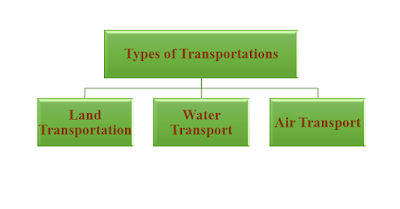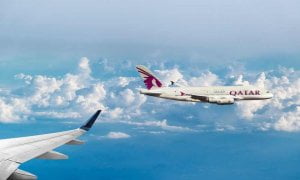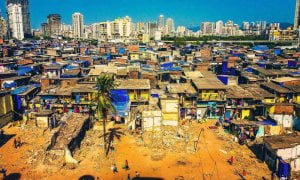Transportation in India: Transportation refers to the activity through which people or goods moves from one point to another. In the perspective of tourism, transportation refers to activity of carrying tourists from their residences or origin place to the tourist destination or where they want to go to or the system used for doing this.
Transportation in India is an integral part of the daily activities of any country. Transportation in India is a crucial functionary of tourism business. Its makes tourist destinations more easily accessible to the tourist. It is an essential element of tourism industry that links the originating and destination place through transit region. There are various types of transportation in India that are used for tourism transport such as land, air, sea and ropeways.
The ideas of tourism products begins and end with transportation be it a movement or experience, so it is impossible to consider tourism or its development without transportation. The factors considered in choosing the mode of transportation in India for tourism are given below
• Time limit
• Distance
• Security
• Price
• Geographical position
• Benefit
• Comfort
• Status
• Competition
Types of Transport
The different modes of transport are land, water, and air transport, which includes rail, road and rope transport. There are various other modes such as cable transport. Sometimes Human-powered transport and animal-powered transport are regarded as separate mode of transport, but in this module it has been taken as part of land transport.
Each transport is fundamentally different in term of technological solution, infrastructure, vehicles, operations and environment. All means of transportation in India which utilize the same environment comes under same transport mode.
1. Land Transport.
Land transport is also referred to as ground transport. The movement of goods, people, and animals is from one place to another on land by means of rail or road.
Roadways
The transportation of goods and personnel from one location to another on roads is referred as Road transport. Road is a route between two destinations, either paved or unpaved that enable transportation by way of vehicular or non-vehicular transport. It is the best suitable mode of transportation in India for delivery of goods between urban areas and small villages.
In the pursuit of leisure and tourism novelty activities road transport has becomes inseparable, as it offers excited and thrilling experiences. It is among the basic infrastructure that links people of remote villages to the mainstream life. Road transport is the only option to reach remote places for enjoying rural tourism, ecotourism, adventure tourism, wildlife tourism etc. Road transportation makes it easy to see and appreciate local culture and places. It presents more flexibility than to other modes of transportation.
Road Transport is the essential modes of transport. The history of Road Transport goes back to ancient civilizations, slowly it becomes more popular and general means of transport for people. Road Transport further subdivided into
Vehicular Transport:
A vehicle usually with wheels and an engine runs especially on roads and used for transporting goods and people on land. For example – Car, Bus, Autorickshaw, Hand Carts, Bullock Carts, and Tonga etc.)
• Car. It is one of the most popular types of transport that are used by most people for short and long journeys daily.
• Bicycles. It is the cheapest and environmentally friendly method of transport for travelling around in nature without damaging it
• Buses. It is ideal for those who takes short journeys from one part of an area or town to another. As it is available in almost every villages, cities, and towns. It is preferred mode of transport for city tour. However, it is a cheap method of transport, it offers a range of travel cards, passes and long term tickets for tourists.
Non-vehicular Transport:
It means mode of transport for transporting goods and people on land that use human or animals as a bearer. For example -Human, Animals like Horse, Camel, Elephant, and Bulls etc.)
• Human
Ø Palanquin: A palanquin is a covered litter typically for one or two passenger. Palanquin is carried mostly by an even number of bearers on their shoulders.
Ø Porter: A porter is also known as bearer. He is a person who carries goods or people for others. The porters are paid to bear heavy burdens at altitude in mountaineering expeditions. Porters are frequently called Sherpas in the mountain region of Himalayas.
Ø Pulled Ricksha: A pulled rickshaw is also a mode of human-powered transport. In a pulled rickshaw a runner or carrier draws a two-wheeled cart seated by one or two people.
• Animal
Ø Tanga: A Tanga or tonga is a light carriage drawn by one or two horses. Tanga are popular mode of transportation in India among tourists because it is fun to ride in and
are usually cheaper to hire in tourist destination. Tanga were still in practice in some parts of South Asia.
Ø Cart: A cart is a vehicle pulled by one or a pair of draught animals using two wheels for transport of goods and people. For transporting, typically two or more horses, oxen, donkeys, camels, or even smaller animals such as large dogs, were used exclusively for transporting humans.
Advantages of Road Transport
• Flexibility of Service.
Road transport provides more flexible service than other modes of transport. It can change or adjust routes and timings according to requirements without much inconvenience.
• Service at Door.
The road transport provides door to door service. The transportation in India starts from residence so it reduces loading and unloading expenses.
• Service in Rural Areas.
It is most suitable for people in rural areas as they have less or no option of rail, water or air transport. It is also convenient and comfortable mode for travel of people and carrying goods. Road transportation in India builds the link between large towns and small villages.
• Suitable for Short Distance.
Passenger board directly to a road vehicle and ply directly to their place of destination. It is more economic and quicker for tourist to travel over short distances.
• Feeder to other Modes of Transport.
Road transport act as a feeder to the other transport. It helps people by connection them to other mode of transport like railways, ships and airways. The movement of tourist begins and ends at their home place by making use of roads.
• Ownership.
People can have their own motor vehicles and initiate their travel or movement without causing any delay in their tour.
Disadvantages of Road Transport
• Nature Dependent.
Road transport is more dependent of nature than other as during rainy or cold season. During these roads become less fit and safe for use due to water flooding and fog.
• Accidents and Breakdowns.
The vehicles are less prepared for incidents like accidents and breakdowns in any moment in ways of tour. Road transport is less safe and fit.
• Unsuitable for Long Distance.
Road transport is less suitable for movement of goods and people over long distances. It is costly and more time consuming for long travel as compared to rail or air transport.
• Less Organised.
The road transport is less organised compare to other transport. Road transportation mostly irregular and undependable and the rates charged are also uneven and unequal.
Tramways
Tramway is one of the cheapest, quickest, safest and suitable modes of Land Transport in large cities. A tram is also known as tramcar; streetcar, or trolley car in different part of world. It is a rail vehicle, typically with two or three bogies which runs on laid tracks along public urban streets.
Railways
Rail transport also referred as train transport. It is a means of transport on which vehicles run on tracks and has fixed routes and schedules. The services of rail transport are more organized, uniform and regular as compared to road transport. It is very cost effective modes of transportation in India for commuting goods and passengers over long and short distances. It is the fastest and dependable as it is the least affected by usual weather turbulences modes of land transport in terms of safety.
Railway is one of the most powerful motives for mass travel in this century. It is most suitable for long distance travel. It offers tourist a fascinating experience and an insight into the country and its people as it passes through green vegetation of villages and towns. It plays a key role in accelerating development in commercial and industrial sectors of various countries in remote areas. Railway has brought the greatest revolution in modern mechanical transport.
• Train. A train consists of a series of connected vehicles that runs along a fixed rail track to transport goods or passengers. Trains are generally classified by the average speed. Indian trains are classified according to speed as superfast, mail and express, followed by passenger, Mainline Electric Multiple Unit (MEMU) and Double Multiple Unit (DMU).
• Monorails. A train running on a single rail bogie, typically elevated. It is developed to meet growing medium-demand traffic in urban transit.
• Rapid Transit. Rapid transit known by various name like metro, subway, tube, or underground. It is a type of high-capacity public transport to cater the increasing demand of urban areas. Metro systems are electric railways that function on grade separated in tunnels or on elevated railways in an exclusive right-of-way.
Advantages of Rail Transport
• Safety. Rail transport is safer than other transport in case of any accident. The injuries and deaths related to other transport are much lower.
• Speed. It is one of the fastest mode of transport, with advent of bullet train. The improved train speeds and reduced length of their routes, the average time needed to transport people has become quite competitive.
• Comfort. Rail transport offer passengers more comfort. It also provide freedom of movement inside the trains’ bogie than road and air transport.
• Environmental Protection. Rail transport consumes lesser energy than other modes of transport. Trains are most energy-efficient means of transportation. It emits less pollution than other transport.
• Capacity. The carrying capacity of trains can be increased or decreased in certain limit and are capable of carrying higher number of than other means of transportation.
Disadvantages of Rail Transport
• Inappropriate for Short Distance. This mode of transport is unsuitable and uneconomical for short distance.
• Lesser Service in Rural areas. Rail transport is less economical in rural areas. The railway service is not operated in large rural areas due to high cost. These rural or remote area are connected through feeder services of road transport and it causes much inconvenience to tourist and people living in the area.
• Lack of Flexibility. The routes and timings is non-adjustable according to the individual requirements. In case of any emergency or requirement passenger have to wait for scheduled timing of train.
2. Water Transport
It means transportation in India is to carry people or goods by water over large distances through boat or other waterborne vessel. It is the oldest and the cheapest mode of transport. From Ancient times Greeks and Romans navigated in the vessels to establish and maintain their trade and colonies. It operates on a natural track and does not require construction and maintenance of its track.
Water transport has played an important role in bringing world closer for travel and foreign trade. The water transport operates with ports in the coastal area of a country and through the lakes and rivers within the country. Water transport consists of: (i) Inland water transport (ii) Ocean-transport
Inland waterways: Inland waterways may be subdivided into
• River Transport. Rivers are the nature’s water highways. It is suitable for small boats, steamers as well as big barrages. It was highly developed in the pre-railway days. It plays significant role prior to the development of modern land transport. It is mostly used in the areas where rivers are dominant.
• Canal Transport. Canals are the normally built for the purpose of navigation and irrigation or both. Canals are artificial waterways, and require huge investment construction and maintenance of its track.
• Boats. Travelling by rivers is usually by ferry, ship or boats. Ferries are often used for crossings of river or many of the islands around in goa, Andaman Nicobar islands. Boats more convenient option as compared to a plane or train in crossing rivers, usually available in river basin.
Ocean Waterways:
Ocean transport is indispensable for deep sea traveler and foreign trade. It operates on a natural track of the sea so it does not require any investment in term of the construction and maintenance of its track. It is the cheapest mode of transport and brought the different places of the world closer into one global tourism market.
Ocean Transport may be subdivided into
Coastal Transport:
Coastal transport is a cheaper, flexible and economical form of water transport for the movement of bulky and heavy goods. In coastal transport, ships ply between the different ports of a country. It is plays an important role in carrying goods and passengers within the country.
Overseas Transport:
In Overseas transport, ships or cruise moves between different places of countries parted by sea or ocean and are used to carry passengers and goods. It is travels on fixed routes that connect almost all the countries. The overseas transport may be divided into
• Liners. A liner is a passenger or cargo vessel, which have fixed routes with fixed places, prescribed schedule or timetable and charges. It provide a uniform and regular services to tourists whether they are filled or not. Liners are usually, a collection of vessels of one owner.
• Tramps. Tramps have no fixed routes, no set rules or rate schedule. Usually, they do not sail until they filled. They are not as fast in speed as liners but ready to sail anywhere and at any time.
• Tankers. Tankers are ships which are specially designed to carry liquids like oil and petrol.
Advantages of Water Transport
• Cheap. The ships or boats ply on water so transport channel is quite cheap as it require less amount of maintenance and running cost as compared rail and road Transport.
• Convenient for heavy Goods. It is convenient for Heavy goods and large number of tourist, as they can be transported easily at little cost between or within country.
• Valuable in time of Natural Calamities. In time of natural calamities like flood, when other transport like rail and road are disrupted. Water transport is invaluable in this time.
Disadvantages of Water Transport
• Speed. It is slower means of transport than air and rail. But it saves time in rivers and canals areas by connecting both side. It depends on rain, failure of monsoon makes navigation difficult due to fall in the water level of rivers.
• Risky. This mode of transport is more risky than other means. The danger of sinking ships or boats is always there and no one to rescue in case of river and sea.
3. Air Transport
Air travel is a status symbol for many people as compared to other modes of transport. It has made significant changes in tourist’s minds concerning time taking and distance travel. Air travel ensures comfort, safety and speedy travel at the domestic and international places. Passenger enjoys several in-flight services such as food, wine, and music.
Over the years to ensure comfortable travel, aircrafts have been modified to improve passenger services, amenities and safety. It connectivity is extended to the places where other mode transport is normally not possible. With the extensive expansion of airline network it plays a significant role in the growth of domestic and international tourism.
Over half (52%) of all inbound travellers throughout world travel to their destination country via air (UNWTO, 2013). The important elements of tourist travel by air are experience that they get by security of aircraft, comfort, and service.
• Airplanes: Airplanes use a propeller to ignite power to the aircraft, and the fixed wings act as a stabilizer for aircraft for keeping it in the air. A long runway is prerequisite for the vehicles to become airborne. The maximum number of tourists travelling aboard chooses to travel by airplane due to less time consumption and luxurious facilities in the passenger planes.
• Helicopters: Helicopters are powered using horizontal rotors having two or more blades. The blades rotate around the top and lift the body of the helicopter along. It can only carry four to six people. Nowadays, helicopters are used to travel in mountain region or flying to top of mountain or hills like Vaishno Devi.
• Rockets: Rockets are propelled via the chemical reaction of a fluid that is ejected at from the vehicle. The high velocities force from the explosion out of the tail of the rocket push the vehicle upward at extremely high speeds. The rocket is fastest mode of transportation that allowed tourist to travel for suborbital and orbital flights beyond the atmosphere. Rockets are future of transport for space travel and tourism.
Advantages of Air Transport
• High Speed. It is one of the fastest means of transport. Tourist or passenger can be transported effortlessly from one place to another within few hours.
• Monetary value. It is quite convenient to travel to different country within few bucks and hours. It transport costly, and perishable goods through air transport.
• Free from physical barriers. Aircraft fly over river, mountains and valleys etc., it is free from physical barriers and helps tourist to travel to any place of their choice.
• Valuable in natural calamities. During any natural calamities like earth quake, flood, and famine, it is used for rescue operations of tourist and people trapped there.
Disadvantages of Air Transport
• High Costs. Due to its high operational costs and costly service. Air transport become unaffordable to Middle class, poor people and budget tourist.
• More Risks. Air transport is in high prone to accidents due to unavoidable circumstances and nature in mid-air. A sliest mistake made pilot can put passenger’s life in dangerous.





